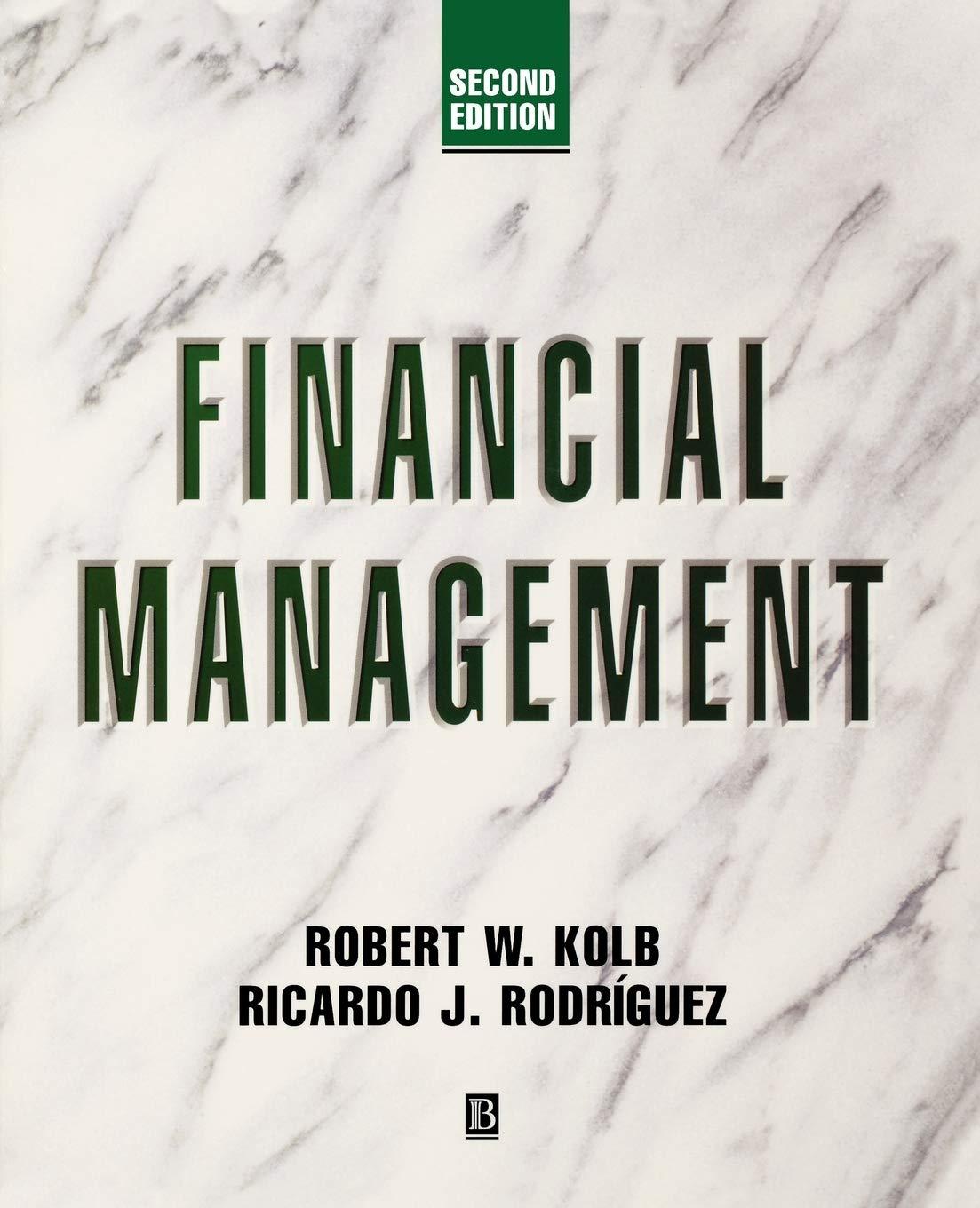Question
Suppose that financial markets consist of 2 risky assets and one risk-less asset. Let Rf=1% and there be four investors each of whom has different

Suppose that financial markets consist of 2 risky assets and one risk-less asset. Let Rf=1% and there be four investors each of whom has different beliefs for the expected returns of the 2 risky assets as follows: ^1= (6% 1%), ^2= (3% 2%), ^3=(2% 3%)and ^4 =(1% 5%). The investors all have the same degree of risk aversion in the mean-variance preferences, p^1= p^2 = p^3 = p^4 = 2, and their wealth levels to be invested are all the same as well w^1= @^2= w^3 = w^4 = 10. The variance-covariance matrix and the true expected returns of the risky assets are given by
COV (2% 0%
0% 2%)
And = (2% 2%)
i) Show that investor 4 has, on average, a positive alpha but should rather be passive (i.e.
should invest in the market portfolio as if he shared the average belief of the investors).
3.5. Suppose that financial markets consist of 2 risky assets and one risk-less asset. Let R = 1% and there be four investors each of whom has different beliefs for the expected returns of the 2 risky assets as follows: ut 6% 1% 3% 2% (2% 3% and je 1% 5% The investors all have the same degree of risk aversion in the mean-variance preferences, pl = p2 = p = p4 = 2, and their wealth levels to be invested are all the same as well wo = w = w;= w; = 10. The variance-covariance matrix and the true expected returns of the risky assets are given by COV = 2% 0% 0% 2% and h = 2% 2% 3.5. Suppose that financial markets consist of 2 risky assets and one risk-less asset. Let R = 1% and there be four investors each of whom has different beliefs for the expected returns of the 2 risky assets as follows: ut 6% 1% 3% 2% (2% 3% and je 1% 5% The investors all have the same degree of risk aversion in the mean-variance preferences, pl = p2 = p = p4 = 2, and their wealth levels to be invested are all the same as well wo = w = w;= w; = 10. The variance-covariance matrix and the true expected returns of the risky assets are given by COV = 2% 0% 0% 2% and h = 2% 2%Step by Step Solution
There are 3 Steps involved in it
Step: 1

Get Instant Access to Expert-Tailored Solutions
See step-by-step solutions with expert insights and AI powered tools for academic success
Step: 2

Step: 3

Ace Your Homework with AI
Get the answers you need in no time with our AI-driven, step-by-step assistance
Get Started


